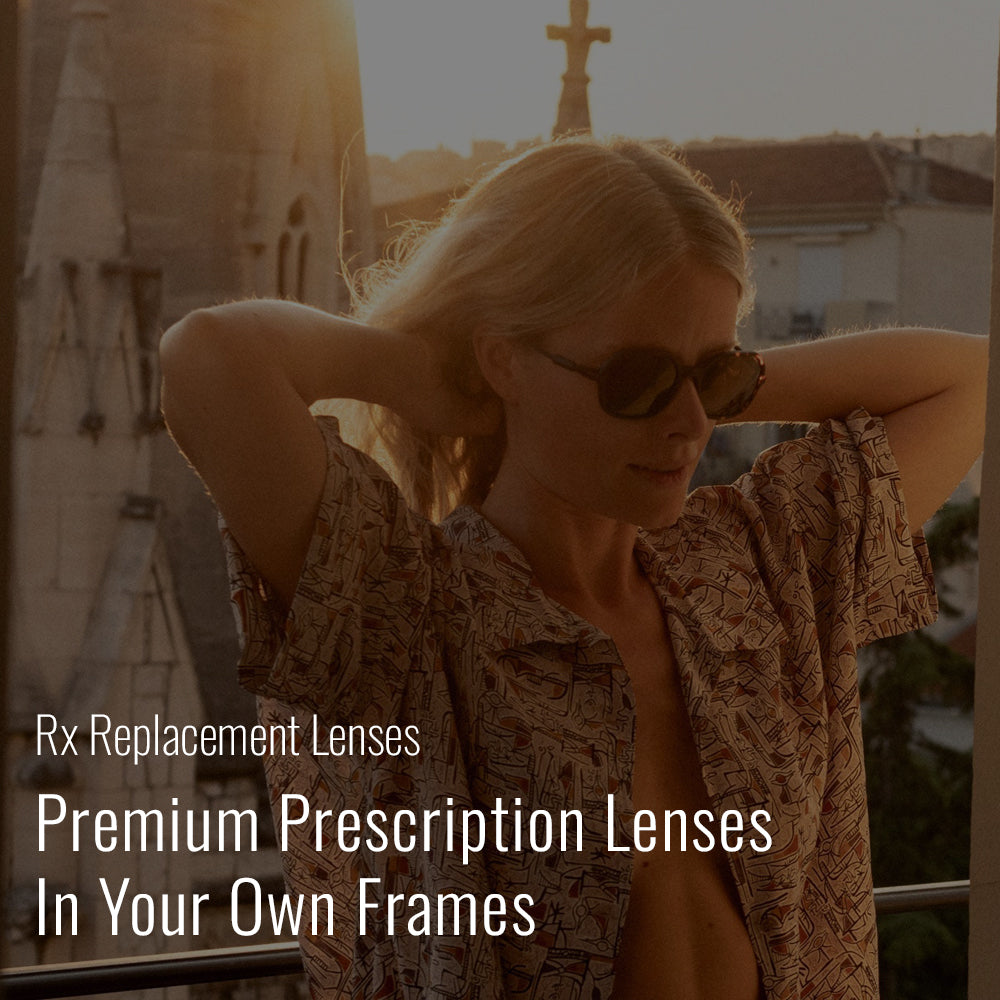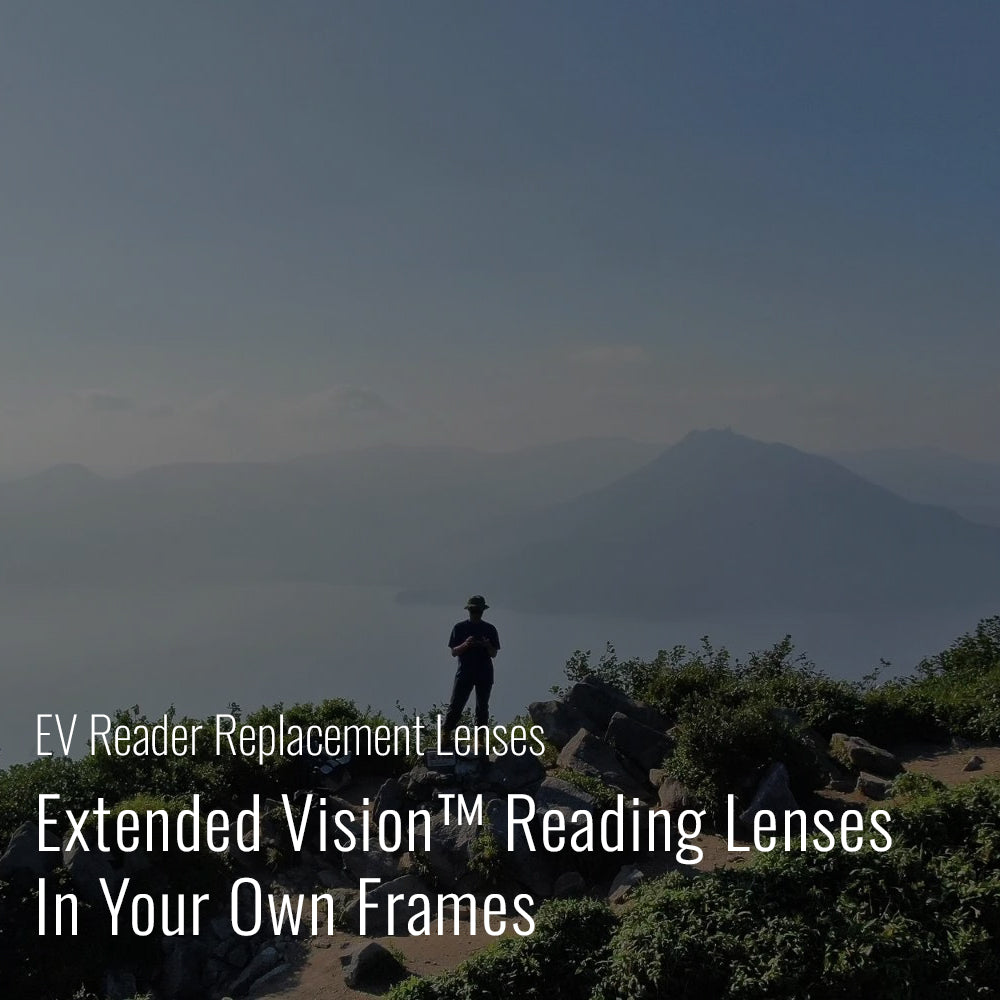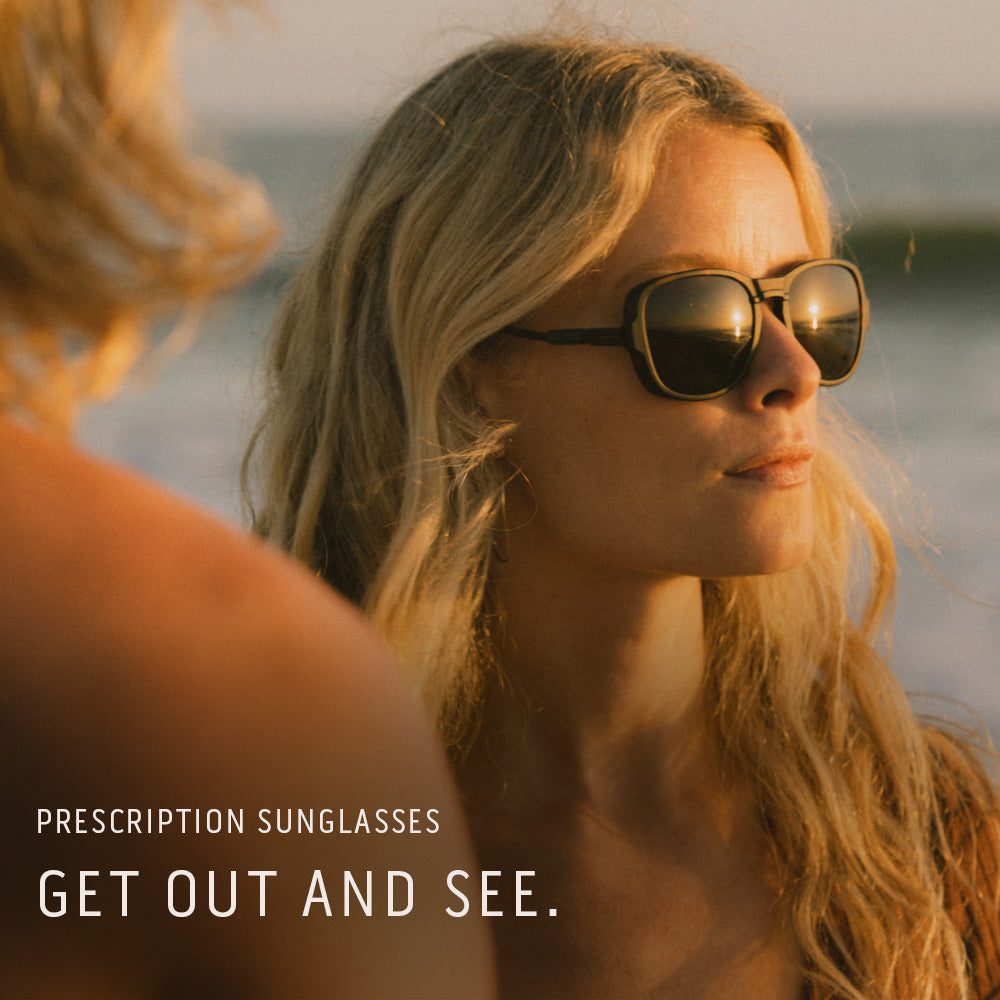Menu
- EV READERS™
Reading Glasses, Reimagined
Mobile Menu
SHOP EV READERS BY BRAND
SHOP EYEGLASSES BY BRAND
SHOP SUNGLASSES BY BRAND
SHOP READING GLASSES BY BRAND

Reading
EXTENDED VISION™ READING GLASSES
Introducing EV Readers: Reading glasses tailor-made to your measurements and designed for the way you need to see.
SINGLE VISION READING GLASSES
Handmade frames in styles by Raen, STATE Optical and L&F paired with custom-made single vision reading lenses.
EXTENDED VISION™ READING GLASSES
Introducing EV Readers: Reading glasses tailor-made to your measurements and designed for the way you need to see.

SINGLE VISION READING GLASSES
Handmade frames in styles by Raen, STATE Optical and L&F paired with custom-made single vision reading lenses.

Prescription
LENSES
Now you can get custom-made lenses with premium coatings mounted into your own favorite frames. Enjoy a better reading glass experience with our collection of Extended Vision™ Reading Lenses. Or give your favorite prescription glasses a second life with our premium Rx Replacement Lenses.
Now you can get custom-made lenses with premium coatings mounted into your own favorite frames. Enjoy a better reading glass experience with our collection of Extended Vision™ Reading Lenses. Or give your favorite prescription glasses a second life with our premium Rx Replacement Lenses.

SHOP REPLACEMENT LENSES

SHOP OMBRAZ LENSES

SHOP EXTENDED VISION™ READING LENSES

Progressive Lenses: What are they and how do they work?
Many people come to L&F and ask us whether or not they need progressive lenses in their eyeglasses. And why. Thus we thought we'd take a moment here to explain what progressive lenses are and how they can help you see clearly throughout your day.
Click this link to our article explaining how to understand your Rx Script - this will help you determine whether or not you need Progressive lenses.
Nearly everyone will experience presbyopia as their eyes get older, typically starting around the age of 40. Presbyopia is a hardening of the eye’s lens which inhibits our ability to focus clearly on close-up objects such as reading a book or focusing on your smartphone. When presbyopia strikes, there are a few different eyewear options available to help your near vision come back into clear focus.
For individuals who are near-sighted or far-sighted, there is a unique lens designed to help you see your world in focus regardless whether objects are viewed in the distance or up close. Progressive lenses – sometimes called Progressive Addition Lenses (PALs) or multifocal lenses – are special lenses that can correct your vision to allow you to see objects in clear focus that are in your far distance focal zone, your middle distance zone, and your up-close / near vision zone. Unlike old-fashioned “lined bi-focals”, progressive lenses achieve these multiple focal zones without any visible lines. So they look great while helping you see clearly.
In addition to looking great, progressive lenses are specially designed to provide different vision correction at different parts of the lens. The top of the lens has your distance vision correction. The middle portion of the lens progressively changes power so that your eyes can focus more easily on objects in a middle-distance zone – such as reading a computer monitor on your desk. And, finally, reading magnification is at the bottom of the lens so your eyes can easily focus on objects up close, like reading a phone, a book, or your watch.
And because the vision correction blends slowly from distance vision to near vision, progressive lens wearers enjoy smooth transitions as they focus on objects between the different focal zones; for example, progressive lens wearers don’t experience “image jump” which is something that happens with Lined bi-focals.
Most people adapt quite easily to progressive eyeglasses. Within a few days they quickly find the “sweet spot” near the bottom of the lens for optimum near vision, and they get used to gently tilting their head up and down to help their eyes smoothly transition between distance vision correction on the top of the lens and reading magnification on the bottom of the lens. And if you lead an active lifestyle outdoors, we encourage you to consider progressive sun lenses so you don’t have keep taking off your sunglasses when you want to focus on your phone or read your watch! If you're trying multi-focal lenses for the first time here are some tips to adapt to the new visual experience of progressive lenses.
If you wear reading glasses or progressive lenses to help you to focus up close, then you'll love our specialty Extended Vision™ Reading Glasses: EV6 for computer work (up to 6 feet of clear vision), EV20 for home or office environments (up to 20 feet of clear vision), or the EVinfinity as your ultimate outdoor companion to see far into the distance and still be able to glance down and read your phone. Extended Vision readers are changing the way we see our work, our workplace, and the outdoors. And you don't need a prescription to order these unique Extended Vision readers.
Have a question about the progressive lenses or Extended Vision reading glasses by Lens & Frame Co.? Click this link to send us a question. We're quick to respond and we're happy to help in any way we can.
While they tend to be a bit more expensive than Rx Single Vision lenses, Rx Progressive lenses are a fantastic hybrid solution to provide you with clear vision across multiple focal zones. And Extended Vision reading glasses are a fantastic first step into multi-focal lenses. No other lens design can deliver a more comfortable and clear view for your distance vision, middle-distance vision, and near vision.
Also in Eyewear Explainers

How to Choose the Right Extended Vision Reader
If you’ve ever wondered why your reading glasses work great for your phone but fall apart when you look at your computer screen—or why your progressives feel awkward at your desk—you’re not alone. As our days bounce between screens, documents, and the spaces around us, one pair of “reading glasses” isn’t always enough.

A Different Way To Reader
Disappointed with cheap reading glasses that can't focus clearly between your phone and your computer screen? Expect more from your reading glasses when you step up to Extended Vision readers by Lens & Frame Co. with lenses that are custom-made to your measurements using the same lens designs and multi-layer anti-reflection coatings as top-shelf Rx Computer Progressives.

What are progressive glasses, who needs them and how do they help people see more clearly
Save 15% today
Join the L&F Insider mailing list and get 15% off your order.*
* Valid for orders over $100
Let the savings begin!
LANDF-XXXXXX
Use CodeClick the button above to automatically apply your discount code to your order.







